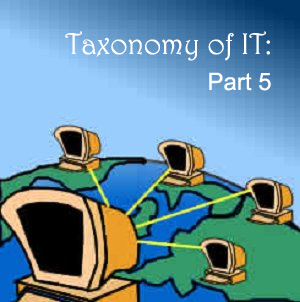ServInt, a provider of managed cloud hosting for enterprises worldwide, today announced the commercial availability of Jelastic, the world’s first software stack-agnostic, platform-as-a-service cloud hosting offering for Java applications. ServInt is the exclusive provider of Jelastic cloud hosting services in the United States, and the first service provider to offer Jelastic commercially.
ServInt’s Jelastic release follows the introduction last month of the ServInt Flex line of “dedicated cloud” servers, which combine the scalability advantages of cloud hosting with the sole-owner benefits of dedicated servers. ServInt now offers hosting products in both the IaaS and PaaS categories, with more cloud offerings and enhancements scheduled for release soon.
“This isn’t the first PaaS solution on the market – even for Java – but it’s the first one that leverages best-of-breed systems from both the hosting and the PaaS software industries,” said ServInt CEO Reed Caldwell. “The folks at Jelastic are amazing software developers. We are a world-class hosting provider. Too many PaaS providers try to be too many things to too many people, and that lack of focus makes them ineffective. We have collaborated directly with Jelastic every step of the way to ensure that Jelastic is the best designed, most reliable and best supported PaaS on the market.”
Jelastic COO Dmitry Sotnikov added, “Since we launched our public beta in October of last year, we have been growing at a rapid pace. Demand hasn’t slowed and the question of commercial availability has become even more frequent. Today, through our U.S. partner ServInt, Jelastic is now commercially available. This is a major step toward making our vision of a truly global, no lock-in, standards-based Java PaaS a reality.”
Unlike other Java PaaS and IaaS options on the market, Jelastic does not require customers to code to any specific API. Jelastic dynamically and instantaneously allocates resources for hosted applications, scaling servers up and down to make sure hosted apps have the resources they need, when they need them.
ServInt’s Jelastic customers are charged only for the actual RAM and CPU resources they consume, rather than for any predefined hosting service package or server they might otherwise purchase. This means hosting costs automatically go down when applications are off or not being used.
Jelastic measures resources being consumed in “cloudlets”, with one cloudlet equal to 128 MB of RAM and 200MHz of CPU processing power. Pricing is set at $0.02 per cloudlet/hour and there is no practical limit on the number of cloudlets that can be deployed. Jelastic does not require any application code changes. This means developers can simply upload their Java package or specify connection to their SVN or GIT code repository, and have their application running in the cloud in a few minutes – with no lock-in whatsoever.
Jelastic is fully compatible with all major Java software stacks, including Tomcat, GlassFish, Jetty and JBoss application servers – as well as with SQL (MariaDB, PostgreSQL, MySQL) and NoSQL (MongoDB, CouchDB) databases.




 25th April 2012
25th April 2012
